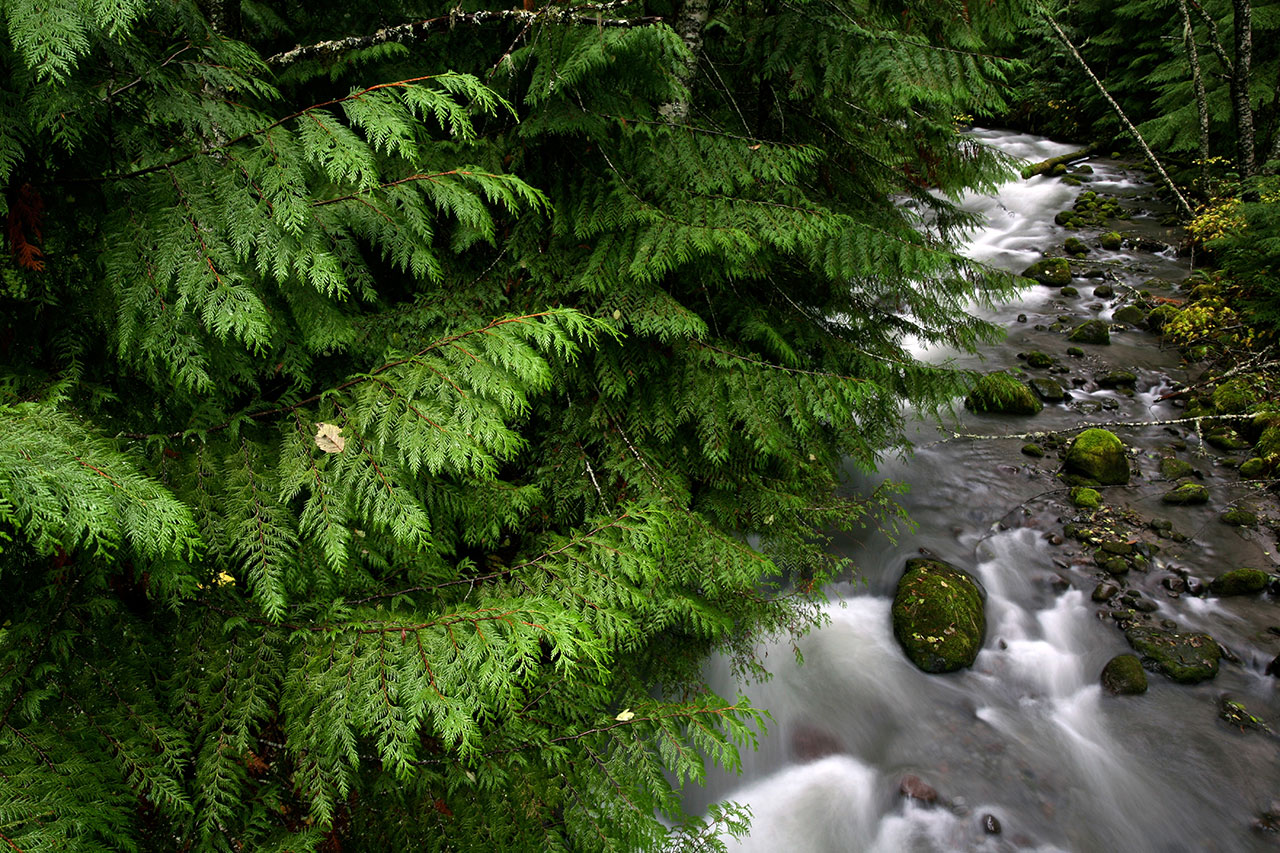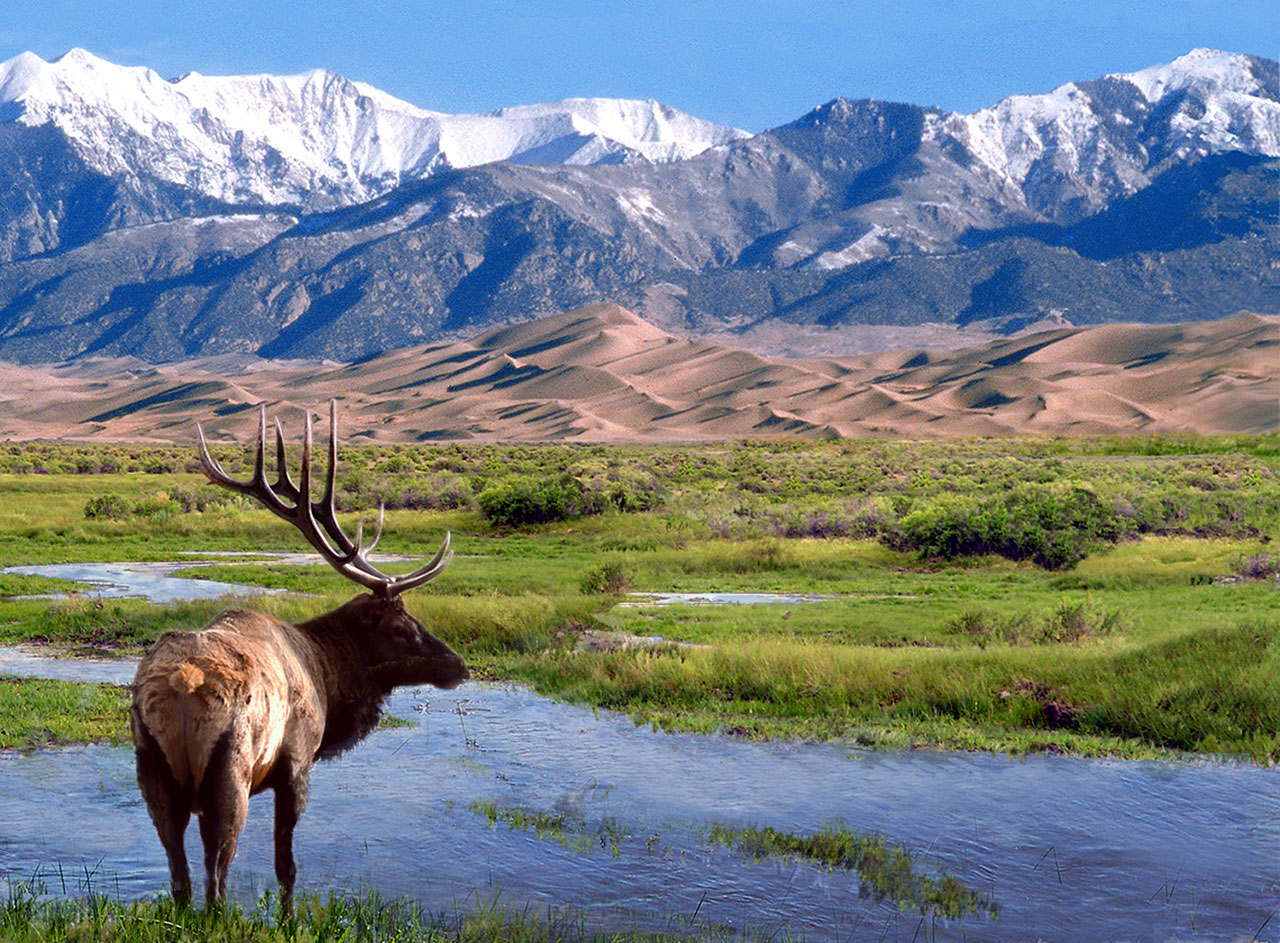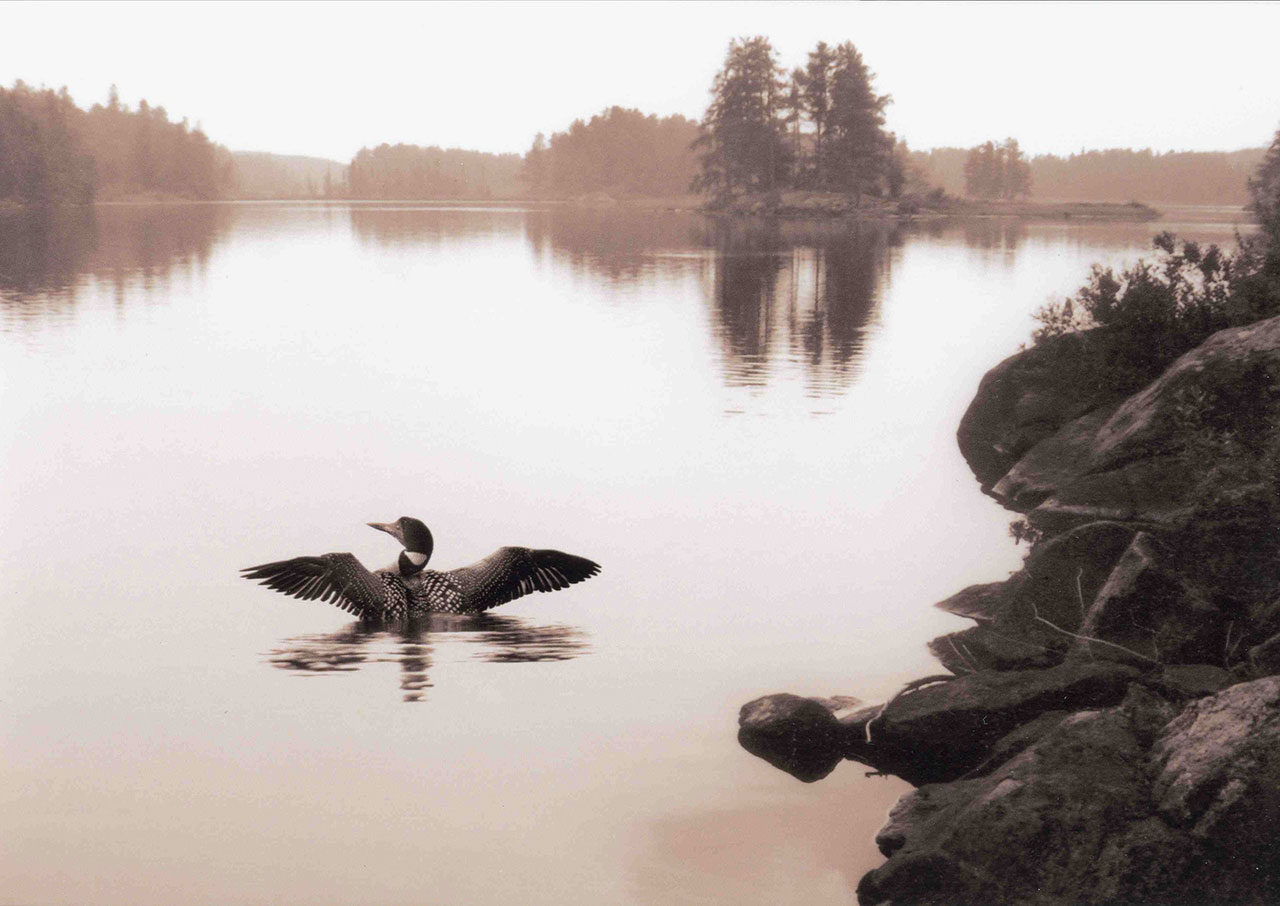Air, Water & Wildlife
Ecological Benefits of Wilderness
Ecosystem Process
No matter where you live, you belong to an ecosystem-indeed, a nest of ecosystems at different scales, culminating in the global ecosystem of the biosphere. The defining processes of ecosystems happen everywhere, yet wilderness provides an unparalleled theater for their full, primal dimensions. "In ecology, we speak of 'wild systems,'" poet Gary Snyder writes in The Etiquette of Freedom. "When an ecosystem is fully functioning, all the members are present at the assembly. To speak of wilderness is to speak of wholeness."

Above: Satellite imagery showing fire starts in Idaho and Montana wildernesses.
One of the most profound expressions of wilderness as "self-willed land" is ecological disturbance. Disturbances such as wildfires and windstorms are important sculptors of landscapes and ecosystems the world over, but we often consider them to be problematic and undesirable. Even as land managers learn to "reintroduce" fire, by letting naturally ignite fires burn or through prescribed burns, conflagrations must be managed in human-dominated landscapes to preserve life and property. Big wilderness offers a home of sorts to wildfire and other dramatic landscape-sculpting forces, which, in turn, ensures the perpetuity of fire-dependent and certain successional organisms and communities.
Clean Air

Wilderness improves the quality of our air because wilderness areas protect some of the cleanest airsheds in the nation. Under the Clean Air Act, air quality must be protected in Class I areas, which include wilderness areas in existence as of August 7, 1977 that are larger than 5,000 acres. This law set a national visibility goal of no human-caused impairment, which was further defined through the 1999 Regional Haze Rule, and established the Prevention of Significant Deterioration of Air Quality Related Values program for review of new pollution sources.
To ensure preservation of air quality, the wilderness management agencies monitor pollution that may impair visibility, harm human health, injure trees and other plants, acidify or cause unnatural chemical imbalances in streams and lakes, leach nutrients from soils, and degrade cultural resources, like archeological sites and historical buildings. Since most pollutants can travel great distances overall air quality is monitored by monitoring visibility, rainwater and surface waters, and lichens.
Clean Water
Many communities use water that starts flowing in wilderness because undisturbed ecosystems have a reputation for producing clean water. According to the Forest Service, two-thirds of the nation's runoff, excluding Alaska, comes from forested areas, including wilderness, and 60 million Americans get their water from these watersheds. Recently, the Forest Service's Forests to Faucets project conducted a national-scale, spatial assessment identifying important forested areas for surface drinking water and reinforcing the importance of wilderness areas for clean water.

Some wilderness areas were designated in order to preserve healthy watersheds. The Rattlesnake National Recreation Area and Wilderness Act of 1980, which designated the Rattlesnake Wilderness just outside Missoula, Montana, states that the "area has long been used as a wilderness by Montanans and by people throughout the Nation who value it as a source of...clean, free-flowing waters stored and used for municipal purposes for over a century." Likewise, in the Endangered American Wilderness Act, which designated a variety of western wildernesses, "Congress finds and declares that it is in the national interest that certain of these endangered areas be promptly designated as wilderness...in order to preserve such areas...for watershed preservation."
Wildlife Protection
Wilderness areas, particularly those in contiguous mosaic with other protected lands, such as national parks, protect portions of endangered species habitat and safeguard sections of animal migration routes that have been heavily constricted or altogether dismantled by human development.

More recent research on animal migration routes in Wyoming reveal that most elk, deer, and antelope herds travel through non-wilderness public lands and private lands, making cross-cutting conservation efforts critical. The wildernesses surrounding Yellowstone National Park, however, protect portions of elk and mule deer migrations routes, which their high-elevation summer ranges in the park and wintering grounds on private lands to the east. One of the world's last great large-mammal migrations occurs in Alaska, where wilderness areas, such as the Gates of the Arctic and Kobuk Valley, frame the seasonal travels of huge caribou herds.

Wilderness constitutes outstanding refuge for birds as well, both migrant and resident. Migrating neotropical songbirds shore up their strength in the seaside thickets of the Gulf Islands Wilderness off the Mississippi coast before making their open-water crossing to Central and South America. The Cedar Keys Wilderness of northwestern Florida supports huge rookeries of colonial sea- and wading birds, such as brown pelicans, night herons and great egrets, and also provides nesting habitat for ospreys and bald eagles. Better than 10 million seabirds nest in Alaska's Aleutian Islands Wilderness, which also offers wintering range for half the global population of emperor geese.
Wilderness can also provide critical refuge for large carnivores, among the creatures that historically have been most difficult for humans to reside with in close quarters and yet are essential for the healthy function of many ecosystems. Gray wolves survived in northeastern Minnesota's Boundary Waters Canoe Area Wilderness after they'd been eliminated virtually everywhere else in the lower 48 states in the mid-20th century. Through both natural dispersal and reintroduction, wolves have expanded from that redoubt, but wilderness from the Upper Midwest to the North Cascades continues to serve as foundational habitat for the species. Wilderness areas in the Rocky Mountains and Pacific Northwest are also critical habitat for grizzly bears and wolverines, two remarkably wide-ranging carnivores that rely on large, roadless expanses.
Wilderness also protects cold-water fisheries. In Colorado, for example, 76% of Greenback cutthroat-trout habitat, 58% of Rio Grande cutthroat-trout habitat, and 71% of Colorado River cutthroat-trout habitat is wilderness or roadless. By preserving habitat for such a variety of creatures, wilderness allows for the innate cycling of birth, life, and death for thousands of species in their natural environments and helps maintain the genetic material needed to provide a continuing diversity of plant and animal life. Without wildlife to pollinate, fertilize, and distribute seeds and nutrients, wilderness wouldn't exist. The continuing presence of our fellow organisms in wilderness reminds us of the connections all living things share, and that we're all part of the biosphere's grand web.